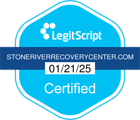Codependency can be a silent accomplice to addiction, creating a cycle that is challenging to break. By understanding the types of codependent relationships, recognizing the signs, and implementing practical tips, individuals can empower themselves to break free of codependency and pave the way for a healthier, addiction-free life.
Codependent relationships can manifest in various forms, each characterized by an unhealthy reliance on another person. They can exist in relationships between romantic partners, spouses, friends, parents, children, and coworkers. In a codependent relationship that involves addiction, the enabler supports and covers up for the addictive behavior of their partner, fostering a cycle that perpetuates substance abuse.
Recognizing codependency in any relationship is essential when in recovery from a drug or alcohol addiction. If you remain in an unhealthy, codependent relationship, it can increase your risk for relapse.
How Codependent Relationships Enable Addiction
Codependent relationships may not appear to be a problem on the surface. But when combined with an addiction, they can be destructive. Since the person struggling with an addiction may have no boundaries within the relationship, they are free to use substances without being held accountable for their actions or consequences.
Some ways that codependent relationships enable addiction include the following:
- Making excuses: The codependent partner may consistently provide justifications for the individual when they cannot participate in social events or gatherings due to their alcohol or drug consumption.
- Apologizing: Someone who is codependent apologizes to others on behalf of their partner’s actions when they are intoxicated. They may try to justify their partner’s drinking or drug use by attributing it to the need to destress from work after a challenging day or another excuse.
- Providing financial support: The codependent partner will financially support the other due to issues that arise as a result of the substance use disorder.
Recognizing the Signs of Codependency and Stopping the Cycle
Codependent individuals may appear as caring and loving partners. They may cover up their addicted loved one’s behavior and make excuses for their substance use. Both partners in the codependent relationship are part of a vicious and never-ending cycle that can cause harm to both parties.
Identifying codependency is the first step toward breaking the cycle. The codependent partner may seem to be overly concerned with the person who has a substance use disorder and display the following signs of codependency:
- Excessive caretaking: Codependent people often feel a strong need to rescue or fix the person struggling with an addiction.
- Low self-esteem: Individuals with codependency may have a poor sense of self-worth and derive their value from others’ opinions or approval.
- Difficulty setting boundaries: Codependent people may struggle to set and maintain healthy boundaries, making it challenging for them to distinguish their needs and desires from those of others.
- Fear of abandonment: An intense fear of being abandoned or rejected often characterizes codependency, leading individuals to go to great lengths to avoid conflict or disagreement.
- Control issues: Codependent people may try to control others or situations to manage their own anxiety or insecurity.
- Denial of personal needs: Codependent people may neglect their own needs and desires to fulfill the needs of others. They might find it challenging to prioritize self-care and will put the needs of the person with an addiction before their own.
- Difficulty making decisions: Codependents may struggle with decision-making, fearing the consequences of choices and seeking reassurance or guidance from others.
Breaking free from codependency is a gradual process that requires self-awareness and commitment. Consider the following tips to stop the cycle:
- Self-reflection: Regularly reflect on your feelings, needs, and behaviors to better understand yourself.
- Establish boundaries: Learn to set and enforce healthy boundaries, recognizing that it is okay to prioritize your well-being.
- Seek professional help: Therapists and support groups can give you the guidance and tools you need to navigate the complexities of codependency.
- Cultivate independence: Focus on personal growth and develop individual interests to build a strong sense of self outside the codependent relationship.
- Practice self-care: Do not neglect yourself; make self-care a priority. Taking care of yourself is just as important as taking care of your loved one.
It’s important to understand that breaking the cycle of codependency may initially evoke feelings of neglect or hurt in your loved one. However, embracing this change can be beneficial in the long run. By putting an end to the destructive loop of enabling addiction, you pave the way for your loved one to receive the necessary support and assistance to embark on the journey toward sobriety.
Are you or a loved one struggling with a substance use disorder? Stone River Recovery Center in San Antonio, Texas, is here to help. We offer a range of programs and services to meet your unique needs. To find out more about all we have to offer, please contact us today.








